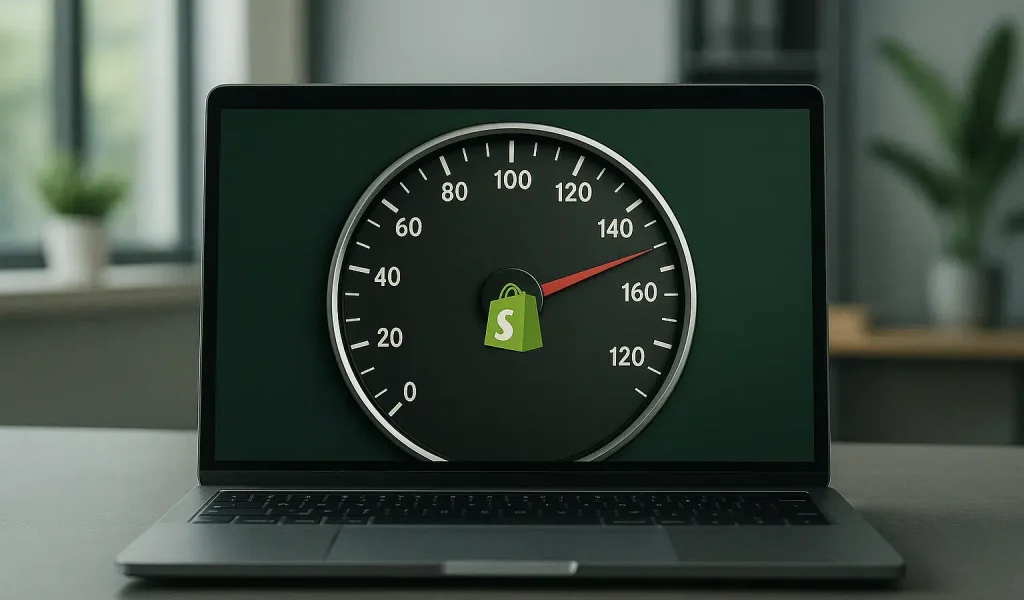Table of Contents
A slow-loading Shopify store can frustrate customers, hurt conversions, and lower your search engine rankings. In today’s fast-paced digital world, site speed is a critical factor in user experience and SEO. Google prioritizes fast-loading, mobile-friendly websites, and even a one-second delay in page load time can lead to a significant drop in conversions. According to Google, if a site takes more than three seconds to load, more than 50% of users will abandon it. This makes improving your store’s speed essential for maintaining customer engagement and boosting sales.
In this comprehensive guide, we’ll explore proven strategies to boost your Shopify store’s speed, with a special focus on how TinyIMG can make a big impact.
1. Optimize Images with TinyIMG
TinyIMG is one of the most effective tools for improving Shopify website speed through advanced image optimization.
Key Features:
- Automatic Image Compression: TinyIMG reduces image file sizes without compromising visual quality, resulting in faster page load times.
- Alt Text Automation: Automatically generates SEO-friendly alt text for images, enhancing search engine visibility.
- Broken Link Detection: Identifies and fixes broken links that slow down your website.
- JSON-LD Structured Data: Helps search engines better understand your content, improving SEO.
Why It Matters: Unoptimized images are a major contributor to slow websites. TinyIMG automatically compresses and optimizes images, ensuring faster load times, reduced bounce rates, and improved search engine rankings. Faster load times also enhance the user experience, leading to higher engagement and better conversion rates.
2. Minimize Apps and Third-Party Scripts
Every app or third-party script you install adds code to your Shopify store, potentially slowing it down. Regularly audit your apps and remove any that aren’t essential. Opt for multifunctional apps that consolidate features and reduce code bloat.
Tip: Before installing a new app, check its impact on load time. You can use Google PageSpeed Insights or Shopify’s built-in performance reports to measure any slowdowns.
3. Enable Lazy Loading for Images
Lazy loading delays the loading of images until they are needed (i.e., when they appear in the user’s viewport). This reduces the initial load time of your pages and improves user experience. TinyIMG supports lazy loading, making it even easier to implement this feature.
Why It Matters: Lazy loading reduces unnecessary data loading and speeds up the browsing experience, especially for mobile users who may have slower internet connections.
4. Compress and Minify CSS and JavaScript
Minifying CSS and JavaScript files eliminates unnecessary spaces, comments, and characters, significantly reducing file size. This leads to faster load times. You can use apps or Shopify’s built-in features to compress these files.
Tip: Combine CSS and JavaScript files where possible to reduce the number of HTTP requests.
5. Leverage Browser Caching
Browser caching allows static files like images, CSS, and JavaScript to be stored in a user’s browser. This means returning visitors don’t need to reload these files, resulting in quicker page loads and a smoother browsing experience.
Tip: Shopify automatically applies browser caching for some assets, but you can further optimize caching policies using Shopify’s theme.liquid file or third-party apps.
6. Use a Content Delivery Network (CDN)
A CDN distributes your store’s content across multiple servers worldwide, ensuring users load your site from the nearest server. Shopify provides a built-in CDN, but additional services like Cloudflare can further optimize delivery speed.
Why It Matters: A CDN minimizes latency and ensures faster content delivery, especially for international customers.
7. Reduce Redirects and Fix Broken Links
Too many redirects slow down your site and frustrate visitors. Audit your site for unnecessary redirects and fix broken links. TinyIMG can help identify and resolve broken links that might be slowing your site.
Tip: Use tools like Screaming Frog or Google Search Console to detect and fix broken links.
8. Limit the Use of Web Fonts
Web fonts can add extra HTTP requests, slowing down your store. Stick to system fonts or limit the number of custom fonts you use. If custom fonts are essential, load them efficiently by using font-display: swap.
9. Optimize Your Homepage
Keep your homepage simple and focused. Avoid autoplay videos, large image sliders, and excessive apps. Highlight your best products or promotions without overloading the page with content.
Tip: Focus on clear calls-to-action (CTAs) and limit the number of homepage products to improve load speed.
10. Optimize Checkout Process
A slow checkout process can lead to cart abandonment. Simplify the checkout experience by removing unnecessary fields and enabling guest checkout. Ensure payment gateways are optimized and responsive.
11. Implement AMP (Accelerated Mobile Pages)
AMP is a Google-backed project that makes pages load faster on mobile devices. While Shopify doesn’t natively support AMP, apps like FireAMP can help implement it.
Why It Matters: Faster mobile pages improve user experience and mobile search rankings, especially as Google prioritizes mobile-first indexing.
12. Regularly Monitor Website Speed
Continuous monitoring ensures your store remains optimized. Use tools like Google PageSpeed Insights, GTmetrix, and Pingdom to regularly test your site’s speed and make necessary adjustments.
Page speed is critical for both user experience and SEO. By implementing strategies like optimizing images with TinyIMG, minimizing apps, enabling lazy loading, and leveraging browser caching, you can significantly improve your Shopify store’s performance.
Faster websites not only improve user experience but also lead to higher search rankings and better conversion rates. Start with these optimizations today and give your Shopify store the speed boost it needs to thrive in the competitive e-commerce space.


